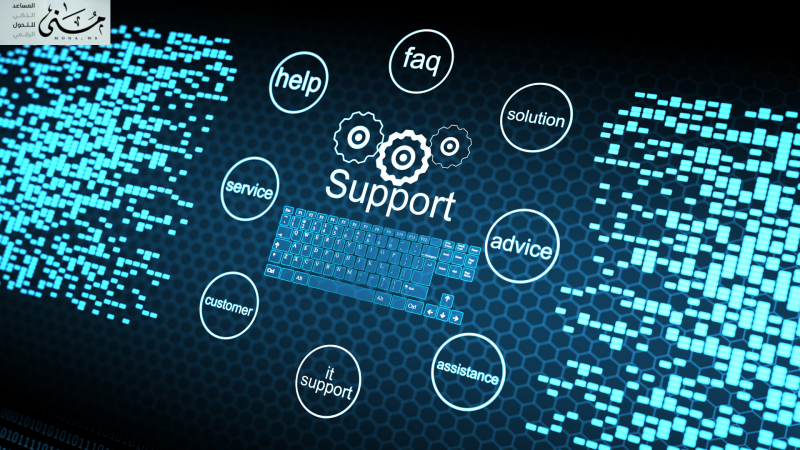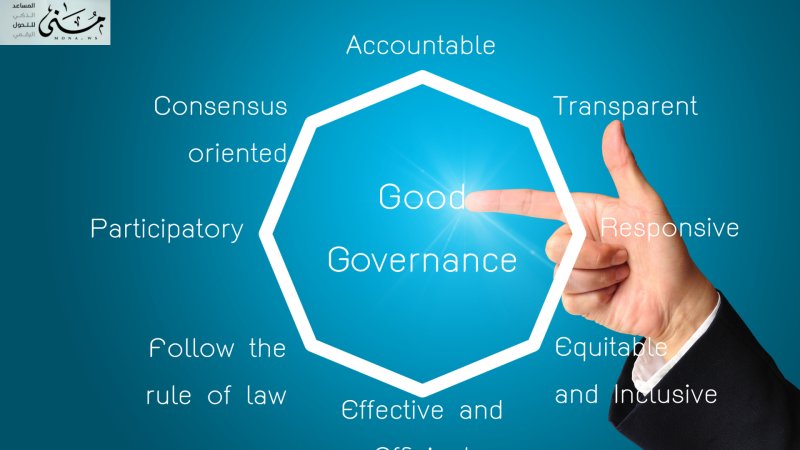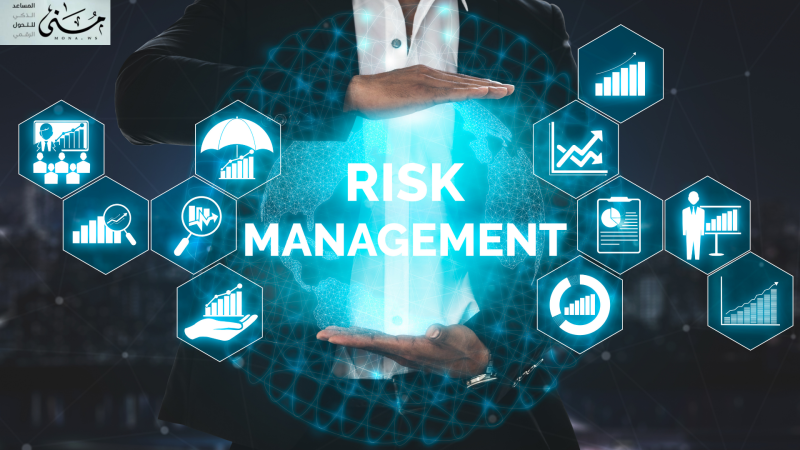What is IT Governance? And Why Is It Important?
Organizations have become increasingly reliant on information technology as a key element in achieving their strategic objectives, and with this increasing reliance, there has been an urgent need to implement IT governance to ensure optimal use of technical systems, protect data, and reduce risks.
Continue reading the article to learn more about IT governance.
IT Governance Concept
With the increasing reliance on technology, IT governance has become an essential necessity to ensure the optimal use of digital systems and enhance the performance of institutions. Governance means a set of policies and procedures that determine how technical resources are managed in line with the company’s goals, which helps improve operational efficiency and reduce technical risks.
By implementing clear policies, compliance with regulations can be ensured and technology investments can be made most of.
Elements of Successful IT Governance
There are several elements of successful IT governance, including:
Strategic alignmentIT plans must be aligned with the organization's strategic objectives, contributing to competitive advantage.
Risk managementGovernance relies on developing mechanisms to protect data and reduce exposure to cyber attacks, which enhances operational stability.
Technical Performance ManagementThis requires monitoring performance indicators to ensure that the desired objectives of technical systems are achieved and to continuously improve IT services.
Compliance and StandardsGovernance aims to ensure that the organization adheres to local and international regulations and legislation, thus protecting it from legal accountability.
Technical Resource ManagementThis includes allocating budgets and technology investments in a way that achieves the highest value for the organization.
The most important frameworks and standards used in IT governance
There are several global frameworks that help organizations implement best practices in governance, including:
COBIT (Control Objectives for Information and Related Technologies):A comprehensive framework that provides guidance for organizing and managing information technology in a way that aligns with strategic objectives.
ITIL (Information Technology Infrastructure Library)A set of best practices that focus on improving the quality and efficiency of IT services.
ISO/IEC 38500: A global standard that provides IT governance principles to ensure compliance and enhance management effectiveness.
In order to choose the most appropriate system or framework for implementing IT governance within organizations, it is necessary to understand the fundamental differences between the most widely used frameworks globally. Below is a brief comparison between three of the most prominent of these frameworks:COBIT, ITIL, ISO/IEC 38500.
|
The element |
COBIT |
ITIL |
ISO/IEC 38500 |
|
Main objective |
Providing a comprehensive framework for IT governance and linking it to strategic objectives. |
Improve the quality of IT services and manage technical operations efficiently. |
Provide guidelines to the Board of Directors to ensure the responsible use of information technology. |
|
the focus |
Governance and management, with a focus on risk and compliance. |
Operations and IT Service Management. |
Corporate leadership and strategic decisions regarding information technology. |
|
Flexibility in application |
Flexible and adaptable to the size and type of organization. |
Flexible but requires long-term commitment to ensure success. |
Simple and convenient for both large and small businesses. |
|
Primary users |
Large corporations and organizations that care about compliance and risk. |
Technical services organizations, IT departments. |
Boards of directors and senior management. |
|
Integration with other systems |
Integrates with risk and performance management systems. |
Integrates with technical operations management tools. |
Integrates with other frameworks such as:COBIT and ITIL. |
|
The practical side |
Focuses on realizing value from technology investments. |
Enhances the quality of daily technical services. |
Focuses on ensuring sound strategic decisions are made. |
Systems that help implement IT governance effectively
To ensure that governance is implemented in a smooth and effective manner, specialized systems can be relied upon, such as:
systemSAP GRC (Governance, Risk, and Compliance):It is used to monitor compliance and reduce operational risks in large organizations.
systemServiceNow IT Governance:Enables risk management and IT performance analysis using AI-based solutions.
systemDocSuite:It helps organizations in digital transformation by automating administrative processes and managing documents efficiently, enhancing compliance with governance standards and ensuring data security.
The implementation of IT governance ensures the optimal use of technical resources, which positively reflects on the performance of companies. It reduces technical failures, enhances cybersecurity, helps in making decisions based on accurate data, and improves the customer experience, as the provision of services becomes faster and more efficient, which enhances customer confidence in the organization.
IT Governance is the Gateway to Digital Success in Organizations
In the age of digitalization, dealing with technology is no longer just an option, but has become an urgent necessity for the success and continuity of institutions. With the increasing reliance on technical systems in managing operations, organizing the relationship between technology and the strategic goals of the institution has become an essential element that determines the institution’s ability to compete.
Here comes IT governance as an effective tool to control this relationship, as it ensures the optimal use of technical resources in a way that serves the general vision of the institution. Relying on advanced systems such as theCOBIT for governance policies and DocSuite for administrative process automation, enable the organization to achieve the desired digital transformation while maintaining quality and reducing risk, making governance truly the gateway to digital success.
IT Governance and Technical Crises in Organizations
Relying on technology without rules governing its use exposes the organization to many risks, including sudden outages, security breaches, and data loss. This is where IT governance comes in, focusing on building preventive systems that limit these risks and ensure business continuity.
By applying criteria such as:ISO/IEC 38500 Boards of directors can set policies that ensure sound decisions are made when managing technical risks. Using systems like SAP GRC enables compliance monitoring and reduces the likelihood of crises. Furthermore, DocSuite helps document and store data electronically, reducing the likelihood of loss or tampering, providing a comprehensive security umbrella for the organization.
IT Governance and Cost Reduction
Some may think that implementing IT governance requires a large expenditure, but in fact it is a long-term investment that leads to reducing operational costs. Governance helps manage technical resources efficiently, and reduces spending on temporary solutions or sudden repairs.
For example, using a frameITIL to improve the quality of IT services reduces breakdowns and increases the life of systems, which reduces maintenance costs. In addition, solutions such as DocSuite enable the automation of administrative processes, which reduces the need for paper and shortens the time to complete tasks, which contributes to reducing operational expenses in the long run.
Can you achieve technical governance without digital systems?
Relying on specialized systems has become a necessity to ensure the success of IT governance implementation. Traditional manual systems are no longer able to keep up with the volume of data and the complexities of modern operations. For example, your organization can use a systemServiceNow for technical performance management, or SAP GRC for risk monitoring, or DocSuite to streamline administrative processes and organize internal communications digitally.
These systems not only facilitate the implementation of governance, but also provide analytical reports that help you make decisions based on accurate data, making governance a practical part of the organization’s daily reality.
Implementing IT governance has become an indispensable necessity for organizations seeking to achieve a balance between leveraging technology and reducing risks. Choosing the appropriate framework and relying on advanced systems allows organizations to achieve this balance efficiently. Technical governance is not only protection for the organization, but rather an investment in its digital future and a guarantee of its continuity in facing challenges.
 اضمن الاستخدام الأمثل للأنظمة الرقمية مع حوكمة تكنولوجيا المعلومات
اضمن الاستخدام الأمثل للأنظمة الرقمية مع حوكمة تكنولوجيا المعلومات











Comments
Add New Comment